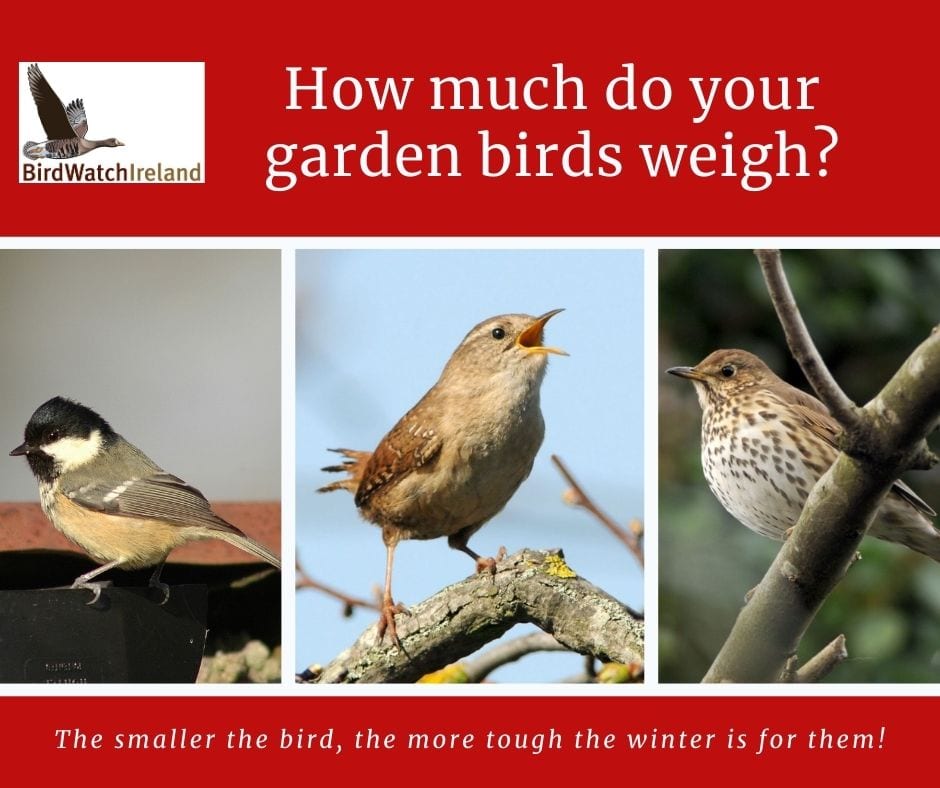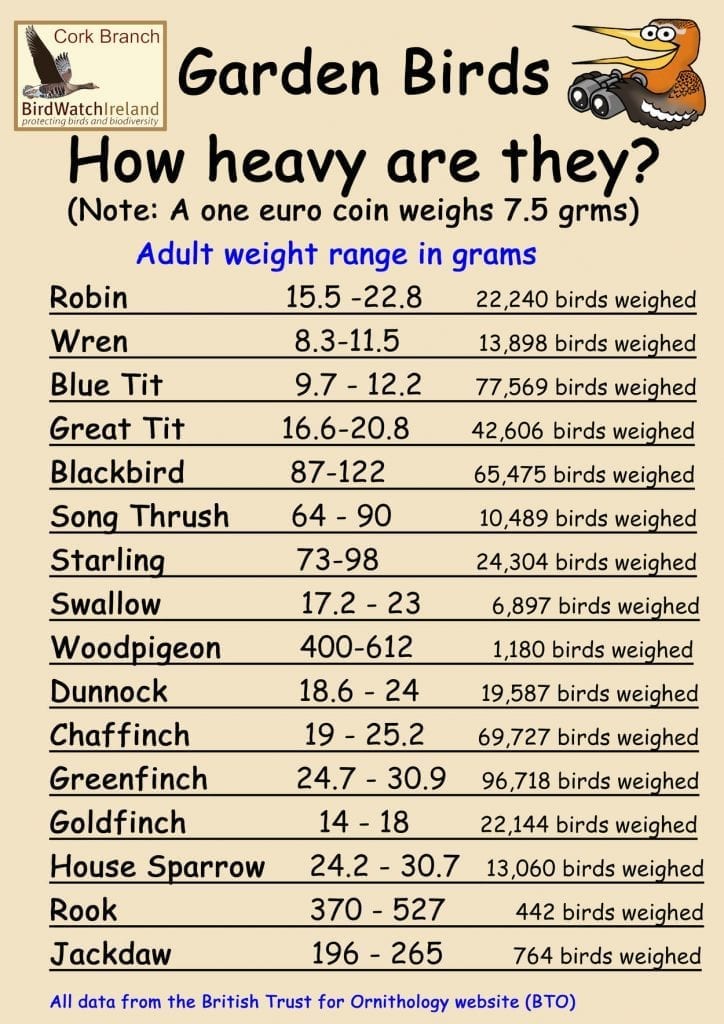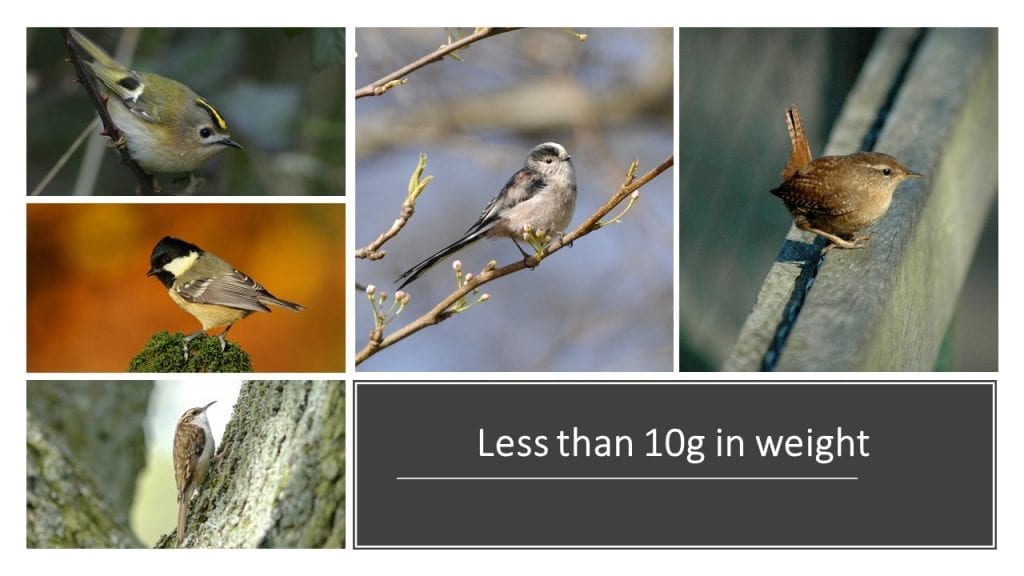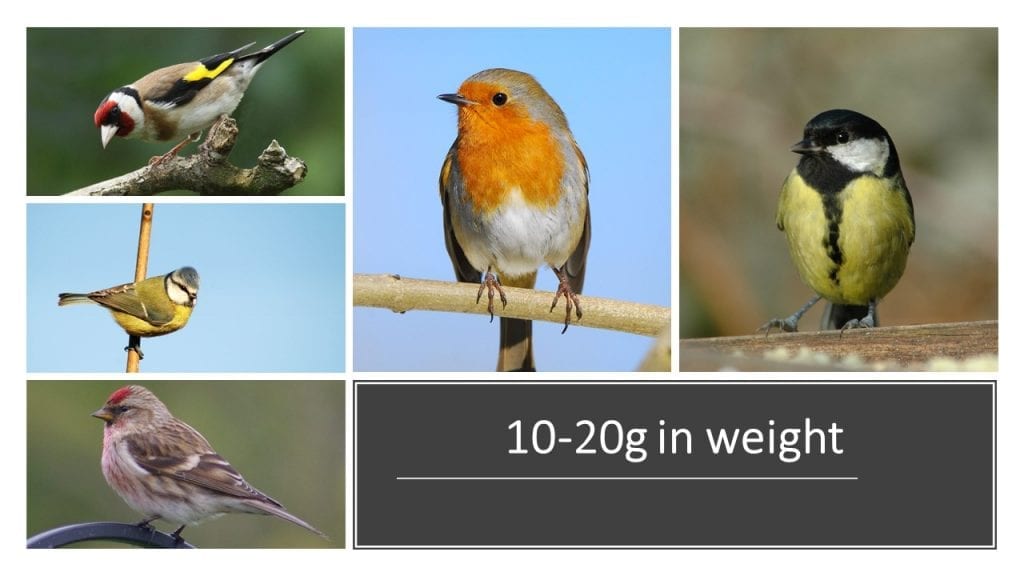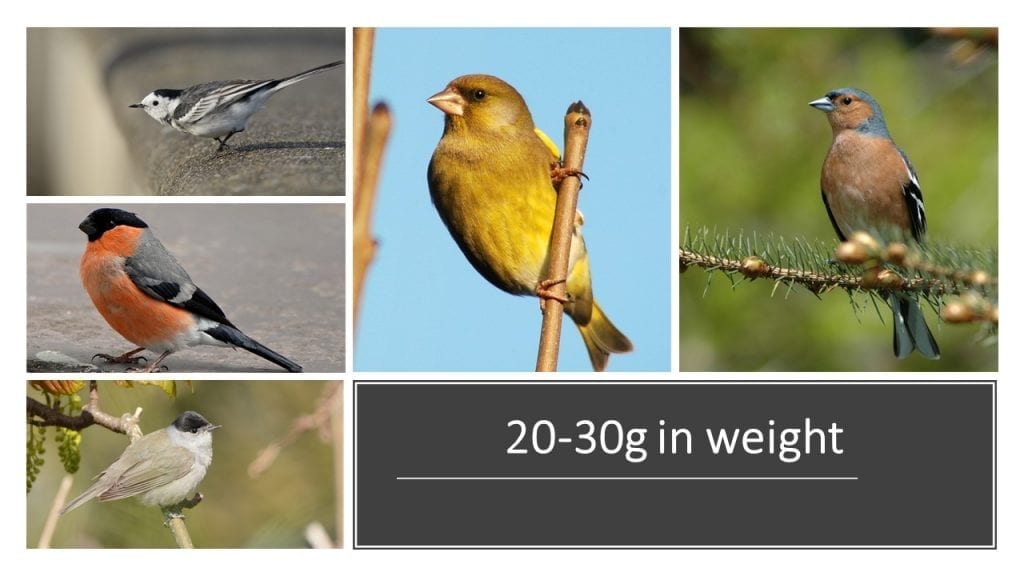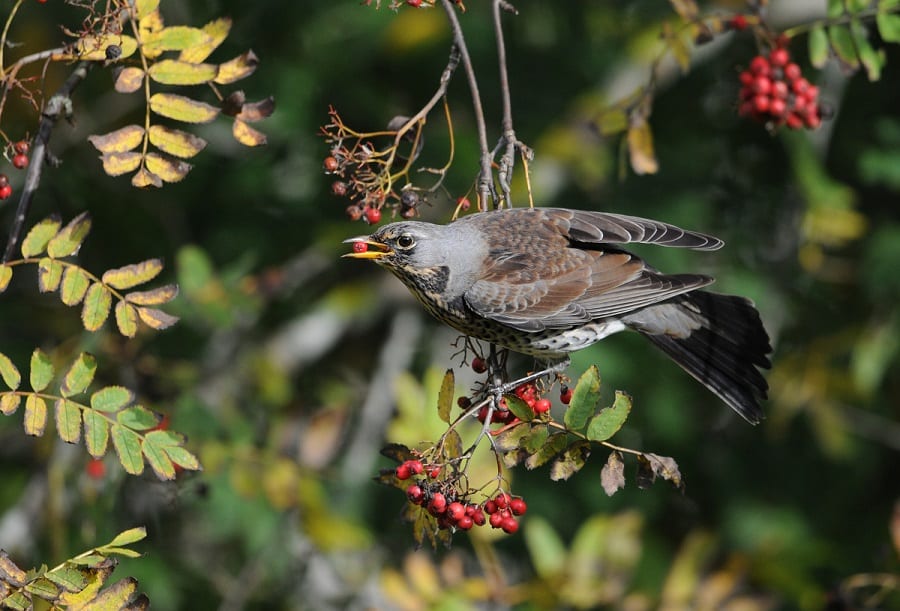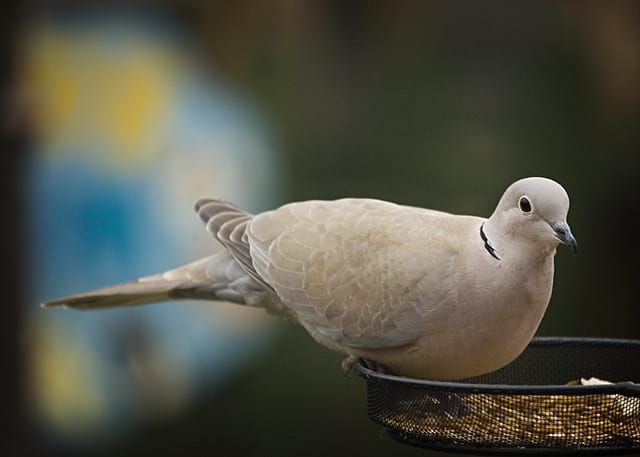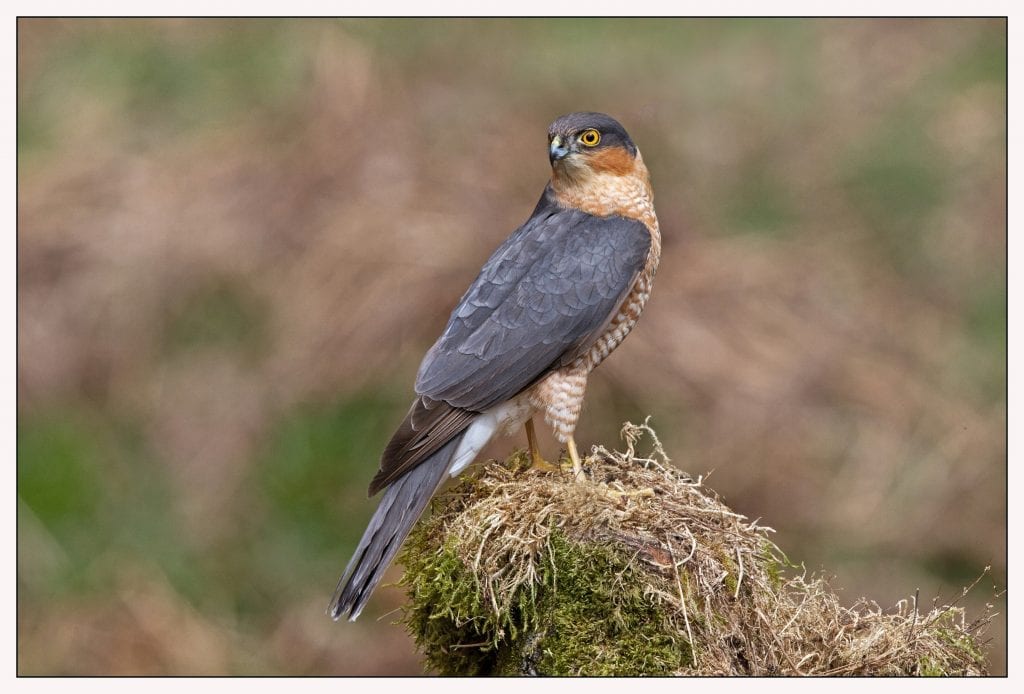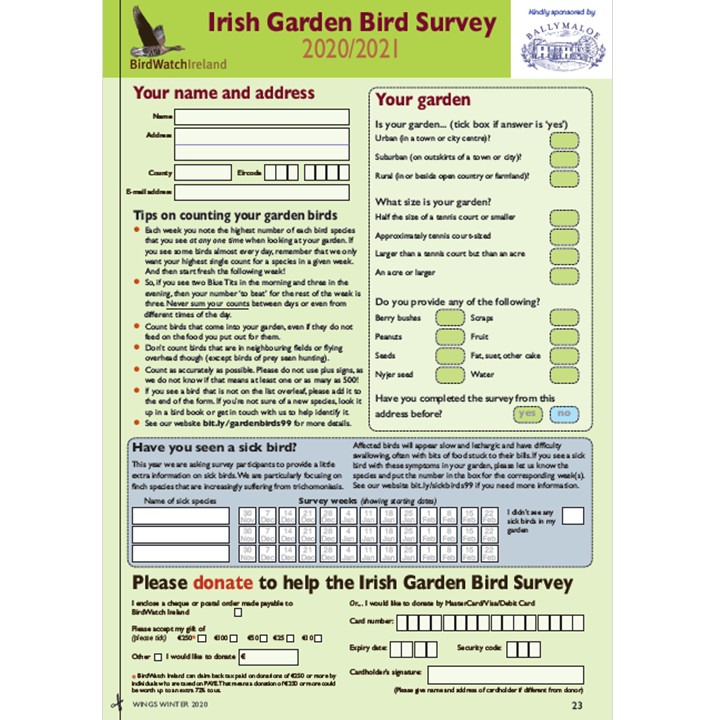There’s still time to get started with the Irish Garden Bird Survey! It’s the biggest and longest-running survey of it’s kind in Ireland. We need as many people as possible all over the country to take part this winter. Taking part couldn’t be easier – See here for details on how to participate this winter . See below for information on how much your garden birds weigh, and why feeding them at this time of year is so important!
The Irish Garden Bird Survey is kindly sponsored by Ballymaloe. Click below to learn about taking part this winter.
The birds in your garden are much more worried about putting on weight this Christmas than you are! If you have a small body, your surface-to-mass ratio is much higher, which means there’s more of a surface area for your body heat to escape from – i.e. you can lose heat very quickly. Heat is energy, and if you’re losing heat and burning off more body fuel than you put on each day then you’re in trouble! This is why feeding your garden birds is so worthwhile – not only are you giving them food high in calories, fat and protein, but you’re providing a predictable source of food so they don’t have to waste energy every day traversing the hedgerows of the countryside in search of any morsels that might keep them going. The winter days are short and the nights are long and cold, so anything that saves the birds energy is a gamechanger!
To really hammer home the point it’s worth thinking about just how little our garden birds actually weigh. We know this through bird ringing. Trained and licensed scientists and ornithologists, in a largely voluntary capacity, catch birds and fit them with a small metal ring to get an idea of how many individuals are in an area, how long they live, how far they travel and a whole host of other data which is pooled together to help us learn about some of the intricate details of the lives of our common and rare bird species. One of the standard bits of information recorded during ringing is the weight of the bird. People occasionally email BirdWatch Ireland saying they saw a ‘big Blackbird’ or a ‘small Starling’, but in reality the variation between individuals of the same species is generally quite small (except where males and females are quite different e.g. corvids, pigeons, birds of prey). See below to get an idea of how much your garden birds weigh, and how much of a difference a few grams of peanuts, seeds or fatballs make to their attempt to survive the winter! And remember, if you’re buying bird food, feeders, nestboxes and other bird-related gifts this winter then check out the BirdWatch Ireland Shop here – by buying from us you’re also helping to support our conservation work!
Traditionally, one might compare the weight of a small bird to that of a coin or a known amount of coins but given the likelihood that your wallet or purse has more plastic cards than coins in it, lets go with that. So, the average bank or supermarket clubcard weighs 5g – keep that in mind!
Less than 10 grams (two bank cards)
The smallest bird in Ireland is the Goldcrest – they weigh a mere 6g on average but can range from 4.7g (i.e. less than your bank card!) to 6.1g. Not far behind them, with average weights of 9-10g are Long-tailed Tit, Coal Tit, Treecreeper and Wren. These species will be the most active in your garden over the winter because the days are so short that they literally need to be feeding non-stop throughout the day to maintain their weight and survive the night!
Wrens and Long-tailed Tits, amongst others, are known to communally roost during the winter – that is, they find some sheltered location and squeeze in together for the night in an effort to share body heat! In the case of Long-tailed Tits, because they’re all closely related they will take turns in the middle (i.e. warmest part) of the group before moving to the outside to give someone else a turn. For other species, where a roost will comprise of a number of unrelated individuals, they’re less generous, so you don’t want to be the last one in and stuck on the outside of the group!
10-20g (two to four bank cards)
Some individual Blue Tits and Lesser Redpolls might come in at under 10g, but generally they average around 11g and can range up to 12.5g on a good day! Siskins are only slightly bigger at 13g, and then you have Goldfinch (17g), Great Tit (18g) and Robin (19g).
Robins play it smart by staying territorial in the winter, and even the females will guard a territory – sometimes one where there’s suitable food but a lack of nesting space so it wouldn’t have been a core territory during the summer. By identifying somewhere with a suitable food source and aggressively guarding it, they save themselves a lot of energy and trouble having to range far and wide in search of food. Goldfinches do the opposite by flocking, but the more eyes in a flock the more likely you are to find food.
20-30g (four to 6 bank cards, or 3 or 4 € coins)
Despite looking much chunkier and heavier, Bullfinches weigh the same on average as the slimline Pied Wagtail (both 21g), and our wintering Blackcaps are the same. Chaffinch weigh in at 24g on average, and it won’t surprise you that House Sparrow (27g) and Greenfinch (28g) are at the top end of the scale when it comes to ‘small’ garden birds. Still, as heavy as they might be, you’re still talking a few bank cards, or four €1 coins! When you think about the battle for survival that these birds face day in day out, it’s amazing that something so small and slight can achieve so much! Don’t forget, in the case of the Chaffinch some of the birds in your garden will have migrated from as far away as Scandinavia, in the hope that their chances of finding food and surviving the winter are better here, even taking into account the pressures of migration.
Tipping the Scales
Of course, there are some much bigger species that use Irish gardens. Despite all looking roughly the same size, there’s a lot of variation in the Thrush family. Redwings, which migrate here from Iceland and Scandinavia each winter weigh around 63g, our resident (and some migratory..) Song Thrushes range from 64-90g but usually come in around 83g, Blackbirds and Fieldfares both average around 100g and Mistle Thrush is the real heavyweight of the family at 130g.
Once you start looking at bigger birds, there tend to be more of a difference between the sexes, with males generally bigger than females for the crows and pigeons. Amongst the crow species, Jays weigh the least (168g), followed by Magpies and Jackdaws (220g, 230g), then Rooks (450g) and Hooded Crow (510g). In the case of Magpies, males are around 40g heavier than females and for Rooks there’s a 60g difference, with the others showing similar discrepancies.
For the pigeons, Collared Doves (205g) weigh around half as much as Woodpigeons (507g). Imagine being a 10g Coal Tit, plucking spilled seeds from under a bird feeder when a Woodpigeon more than 50 times your size lands beside you!
Collared Doves look only a bit smaller than Woodpigeons, but actually Woodpigeons weigh twice as much!
Lastly there’s the exception to the rule of sexes. Amongst many birds of prey the female is actually bigger than the male, and it’s the same for Sparrowhawks. Females weigh on average 266g (range 186-345g), while males are a third smaller at 151g (range 131-180g). Such a big discrepancy between such specialist birds means that male and female Sparrowhawks will actually target very different-sized prey to each other.
Male Sparrowhawks are a third smaller than females.
When you realise just how small most of our garden birds are, you can really appreciate the importance of a reliable food source for them, particularly during the winter!
Remember, BirdWatch Ireland needs your support now more than ever, and our annual membership makes for a great christmas gift that will keep on giving throughout the year! See here for full details.
The Irish Garden Bird Survey is running right now and taking part couldn’t be easier! Click here for full details about the survey as well as as advice on caring for your birds through the winter.
This winter we’re running a series of blogs like this one, filled with facts and figures about your favourite garden birds, click here for more.
We are hugely grateful to Ballymaloe for their sponsorship and support of the Irish Garden Bird Survey.
Click below to download your count form for this year’s Irish Garden Bird Survey.

